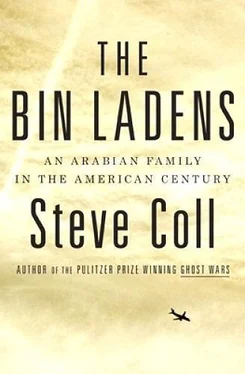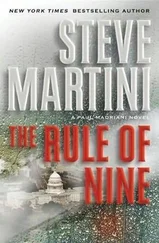THE AIR WITHIN Jeddah’s protective walls “held a moisture and a sense of great age and exhaustion such as seemed to belong to no other place,” wrote T. E. Lawrence, better known as Lawrence of Arabia. There was “a feeling of long use, of the exhalations of many people, of continued bath-heat and sweat.” Temperatures rose well above one hundred degrees Fahrenheit in the summer, and salty Red Sea winds stifled breath. “Newspapers flop into rag, matches refuse to strike and keys rust in the pocket,” a British visitor complained. Each day about five thousand camels moved through the city, dropping what Jeddah’s mayor estimated to be more than thirty thousand pounds of manure. “The goods on display in the market are covered with so many flies that you cannot tell the color of the goods without chasing them away,” the Persian pilgrim Hossein Kazemzadeh wrote. “In the evening, when the shops close, the flies go, like the merchants, to private houses to seek their prey.” 17
For more than a thousand years Jeddah had served as the gateway to Mecca. Through the city poured pilgrims bound for the annual Hajj festival—one hundred thousand of them each year by the early twentieth century. They were Muslims of every hue and background, from Africa, Southeast Asia, India, and Europe. They came, too, for lesser pilgrimages throughout the year; rowboats called sambuks ferried the new arrivals from ships anchored in the port’s deep water. At the pier porters and guides hustled them to crude barracks where they were segregated by national origin. Many of these pilgrims stayed on in Jeddah after they had offered their devotions, and their descendants had transformed the region, known as the Hejaz, into a polyglot, a “hodge-podge of humanity which Islam brings together from every corner of the earth,” as the pilgrim Amin Rihani wrote in 1922. In Jeddah there were extremes of wealth and poverty, observed Kazemzadeh: “You see rich people who will pay several pounds for a flacon of perfume, pour it all out on their heads and walk off…On the other hand, there are wretches in a state of total privation, lying nearly nude along the road, seeking some relief in the shade of the bushes.” Wealthier families lived in tall Turkish-style town houses fashioned from coral dug from the shoreline and covered in slatted wooden shutters that cooled the interiors and kept women invisible to passersby. The poor wrapped themselves in cloth and slept in Jeddah’s sandy lanes. 18
Cholera epidemics swept through the city. Europe’s nascent public health authorities recognized the global migration to and from the Hajj as a potential source of pandemics. The colonial powers struggled to create a workable system of quarantine. An Ottoman doctor summoned to treat one cholera scourge around the century’s turn found Jeddah “a vast cemetery” teeming with “dead bodies that filled the caravansaries, mosques, cafes, houses and public places”; he was haunted by “the cries of men, women and children mixed with the roaring of the camels.” 19
Harry St. John Bridger Philby, a British adventurer who would soon play a remarkable role in the city’s growth, arrived in Jeddah during the 1920s, around the same time as Mohamed Bin Laden. Philby encountered a
jumble of wealth and poverty; great mansions of the captains of commerce and enterprise, with their solid coral walls and wide expanses of woodwork tracery, side by side with hovels broken and battered with age; mosques great and small, with pointed minarets tapering skyward…Everywhere a contrast of light and shadow, splendor and squalor, dust and dirt; and above it all flew the flags of many nations, Great Britain, France, Italy, and Holland, amid the countless emblems of a united Arabia. 20
The city’s economy turned on pilgrims, who paid taxes amounting to about 3 million British pounds each year in this period and generated another 4 to 5 million pounds in commercial profits for the merchants, camel owners, tour guides, and hoteliers who competed for their purses. The greed and carnival-barking style of Jeddah’s hospitality industry was legendary; the medieval traveler Ibn Jubayr noted skeptically that even before the arrival of Islam, the city fathers had raised “an old and lofty domed shrine” to attract tourists; “it is said that this was the resting place of Eve, mother of the human race…God knows best about all that.” 21The opening of the Suez Canal in the late nineteenth century transformed the Red Sea into a colonial bazaar where European steamers, African traders, and Arabian middlemen competed for profit and influence. By the time Mohamed Bin Laden arrived, Jeddah was a citadel of hustlers.
He began as a porter in the pilgrim trade; a leather satchel he used to haul goods and luggage hung later in one of his offices. He and his younger brother were so poor during their first days in Jeddah that they slept in a ditch they dug in the sand, and covered themselves with bags, according to Nadim Bou Fakhreddine, who worked for the family years later. Early on, Mohamed opened a small grill stand in the Nadha market on the Jeddah seafront, “a small shop with one or two big dishes” for cooking, recalled Hassan Al-Aesa, who worked as a laborer with Bin Laden in Jeddah during the 1930s. An account of Bin Laden’s origins written by a British diplomat several decades later reported that he had sold “fruit off a donkey” in these early years, an assertion that may have been more metaphorical than factual.
He saw that the housing industry offered promise. He began to look for odd jobs in the building trade. The coral and sediment paste used in the walls of Jeddah’s multistory town houses crumbled easily and required continuous patching and repair. Particularly during the late 1920s, when the city’s economy enjoyed a brief period of relative prosperity, there were opportunities for young men to work in the coral quarries or as crude masons and small-time contractors. In 1931, Bin Laden founded his own small company. 22
He was an attractive man with even features and coffee-colored skin. His wandering glass eye distracted some who met him, but he had a natural lightness and bounce about him. He was not an imposing man—about five feet eight inches tall—but he was a natural organizer, a good-natured practical joker, and a man who thrived in the company of others. He and his brother found their way into Jeddah’s tight-knit Hadhrami community and joined in its traditional entertainments, particularly the dances and group songs, called zomals , which reminded the men of home. Al-Aesa recalled watching Mohamed and Abdullah dance and sing in the Jeddah night: “They were very humble.” There was one zomal , traditionally sung with pistols in hand, punctuated by celebratory shots fired into the sky, which the two Bin Laden brothers used to belt out with gusto:
Today my school is finished
And my watch is gold
And my pistol with six bullets
Did not answer my salam aleikum 23
Bin Laden had a gift for sensing the qualities of people around him, and for retaining their loyalty, recalled Gerald Auerbach, an American pilot who later worked for him. “He knew how to get people who could do the job. He knew how to tell when they were doing the job and when they weren’t. He had a better feel for engineering by birth, or accidentally, than many people that I’ve known have on purpose after they go through a lot of schooling.” As Al-Aesa put it: “Because he was so good and so kind, all the chief craftsmen used to work with him willingly.” 24
Abdullah Hashan ran Jeddah’s lucrative foreign-exchange markets, where Maria Theresa silver thalers and gold coins traded amid wild swings of prices. He handed Bin Laden his first major job in the old city, “doing maintenance and renovation,” on a grand town house he owned that served as a part-time courthouse for some of Jeddah’s Islamic judges, as Al-Aesa recalled it. Bin Laden “made some arches and fixed things” in a modest renovation project. “It was pure luck.” But not luck alone: he had the ability to build and perform contracting work quickly, and in a manner that pleased the whimsical, demanding personalities of Jeddah’s wealthy. The Hashan job set him on his way. Mohamed and Abdullah moved into a very small house on the city’s north side. 25
Читать дальше












